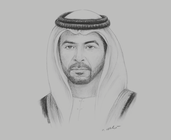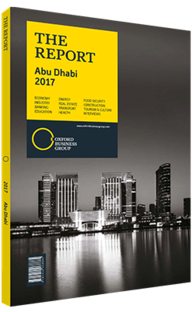Sheikh Hamdan bin Zayed Al Nahyan, Ruler’s Representative in the Al Dhafra Region: Interview

Interview: Sheikh Hamdan bin Zayed Al Nahyan
How have industrial development and economic diversity policies progressed in Al Dhafra?
SHEIKH HAMDAN BIN ZAYED AL NAHYAN: Any process of development and economic diversification begins with the growth of infrastructure. Al Dhafra makes up over two-thirds of Abu Dhabi emirate, and over the past year we have made many commitments and have achieved substantial success in infrastructure development. These achievements include the construction of housing units, the new Ghuwaifat (E11) Highway, the upgrading of Sir Bani Yas Airport and Dalma Airport, as well as new ports in Al Mirfa, Sila and Dalma. As part of urban development in the region, new roads such as the Madinat Zayed-Mirfa Highway are under construction to better connect inland cities with coastal cities. Al Dhafra’s ambitious development programme is pursued within the scope of two comprehensive strategic policies for the overall development of the Abu Dhabi emirate: the Abu Dhabi Economic Vision and Plan Al Dhafra 2030. This broad vision has received praise from planners and policymakers around the world. What makes Plan Al Dhafra 2030 distinctive is that its goals are both social and economic. While it aims to use oil revenues and other natural resources to create a sound economy, it also gives equal importance to the diversification of the economy and development of the community. The policies pursued for the development of Al Dhafra originate from a vision of making the region a great place to live and raise families, learn and do business, while also creating an environment that respects the past while setting new standards for the future.
How is strategy being developed around great private sector participation in the region?
SHEIKH HAMDAN: Fostering entrepreneurship among Emiratis is an integral part of any policy or programme adopted for economic development. It has always been a pet policy of the region to broaden its economic base through public-private partnerships. The development of the tourism sector through the creation of opportunities for private sector partnerships was a touchstone for measuring the merits of this policy. Success in this sector is most evident in the development of hospitality. Projects achieved through private sector participation include the expansion of Ghayathi Hotel to 248 keys, the upgrading of Madinat Zayed Hotel with 107 keys, and the expansion of Danat Resort with the new Ruwais Jebel Hotel on more than 180,000 sq metres of land. We have also just completed a mixed-use development exceeding 74,000 sq metres right next to the port, achieved through successful partnership with private developers. Meanwhile, the redevelopment of the Al Mirfa Port and the extensive waterfront that adjoins it provides an excellent case study for the benefits of creating a wide range of opportunities for business people and investors that benefit communities in the locality. These projects encourage innovation in locating, designing and implementing new developments in the hospitality sector, where we can accommodate young Emirati entrepreneurs who aspire to start up new small and medium-sized businesses.
How can Al Dhafra best leverage tourism as an economic contributor?
SHEIKH HAMDAN: Tourism is a booming industry in the emirate, and Al Dhafra offers a wide range of opportunities in its development due to its natural and historical assets. Al Dhafra is nature’s beautiful gift; it is where the desert meets the sea. It is home to the historic oasis town of Liwa, which is situated at the mouth of a large desert known as the Empty Quarter. In pursual of further success, we have also rebranded the region to reflect its rich cultural history. Now known by its ancient name of Al Dhafra, we can promote our great heritage and highlight our distinctive history. This will also raise awareness of our traditional values and culture, which we view as essential for the prosperity, happiness and success of future generations.
You have reached the limit of premium articles you can view for free.
Choose from the options below to purchase print or digital editions of our Reports. You can also purchase a website subscription giving you unlimited access to all of our Reports online for 12 months.
If you have already purchased this Report or have a website subscription, please login to continue.

